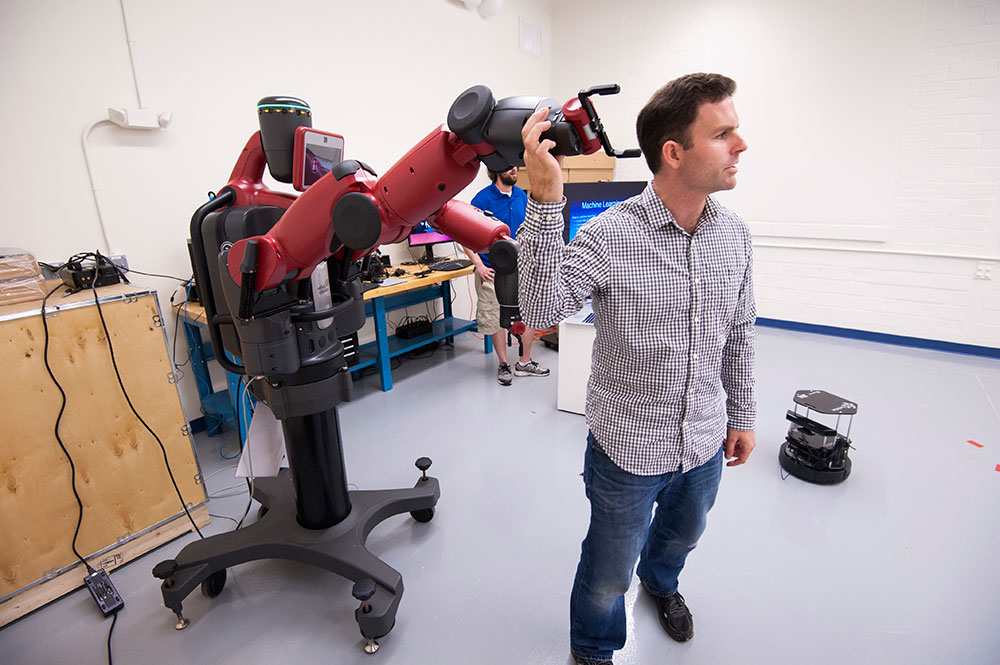Data Science and Robot Learning
Computer scientists and cognitive scientists at the University of Rochester are using data science to help make the world a better, more connected, and healthier place.
 Thomas Howard, assistant professor of electrical and computing engineering, computer science, and biomedical engineering, directs the newly formed Robotics and Artificial Intelligence Laboratory, which develops robots that learn how to perform complex tasks robustly and efficiently.
Thomas Howard, assistant professor of electrical and computing engineering, computer science, and biomedical engineering, directs the newly formed Robotics and Artificial Intelligence Laboratory, which develops robots that learn how to perform complex tasks robustly and efficiently.
A focus of his investigations include machine learning for human-robot interaction and robot motion planning. Machine learning enables robots to quickly learn the correspondences between various forms of data, such as audio or video, and activities that they should perform without explicitly coding such relationships. They also enable robots to learn how to solve challenging problems by adjusting algorithm characteristics to facilitate how they find solutions.
He and his students are currently investigating natural language interaction models for seven robots in his laboratory: a two-armed humanoid torso, a four-wheeled skid-steered field robot, and five differential-drive mobile robots.
The humanoid torso, a research platform build by Rethink Robotics, is being used as part of a collaboration with MIT and Cornell University on learning models for verifiable human-robot interaction. The goal of this effort is to develop intelligent robots that are able to reliably perform complex manipulation and assembly tasks from natural language descriptions.
The six other research platforms, build by Clearpath Robotics Inc, are learning how to navigate in indoor and outdoor environments using human information and communicate their observations back to people.
Building on his past experience as a research technologist at NASA’s Jet Propulsion Laboratory, he envisions the mobile platforms as robotic co-explorers that could work with geologists to assist with scientific surveys and in-situ experiments. “Robots are fantastic for performing tasks that are repetitive and/or in remote locations,” Howard says. “My goal is to make them efficient, reliable, and easy to work with.”
